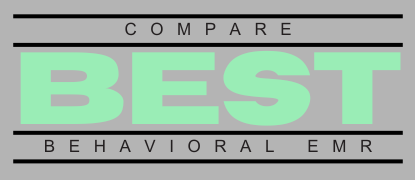For behavioral health practice owners and clinicians, optimizing patient outcomes and operational efficiency is an ongoing challenge. Many practices still struggle with fragmented systems, manual documentation processes, and disconnected workflows. Effective EMR integration in behavioral health can address these common pain points—streamlining documentation, improving patient care coordination, and ultimately driving better clinical outcomes. But how do you know if your current EMR system is up to par? In this article, we’ll explore how EMR integration can help your behavioral health practice and how you can evaluate your current setup through our free practice analysis.
Why EMR Integration in Behavioral Health Matters
Behavioral health practices face unique challenges that make EMR integration especially valuable. From coordinating care across multiple providers to adhering to stringent regulatory requirements, your EMR system should support—not hinder—your workflows.
A well-integrated behavioral health EMR can:
- Improve documentation accuracy and compliance
- Boost productivity by reducing repetitive manual tasks
- Enhance communication and collaboration among care providers
- Support data-driven clinical decisions for better patient outcomes
Signs Your Practice Needs Better EMR Integration
Unsure whether your current behavioral health EMR is supporting your practice effectively? Check for these common indicators that you may need better EMR integration:
1. Frequent Double Data Entry
If your staff spends significant time entering patient data into multiple systems, that’s a clear sign your EMR integration is lacking. Efficient integration means information entered once is available everywhere it’s needed.
2. Difficulty Coordinating Patient Care
Behavioral health often involves collaboration among various providers—therapists, psychiatrists, primary care physicians, and even social workers. A fully integrated EMR system ensures that patient information is readily accessible, improving collaboration and reducing errors or delays in care.
3. Compliance and Documentation Challenges
Regulatory compliance is critical in behavioral health. If your current EMR isn’t simplifying compliance reporting or helping your clinicians keep accurate records, it’s not working to its potential. Integrated EMRs provide automated documentation tools tailored to behavioral health, ensuring you meet regulatory requirements with less hassle.
Benefits of a Fully Integrated Behavioral Health EMR
Investing in robust EMR integration provides your practice with significant short-term and long-term benefits:
Enhanced Clinical Decision-Making
Integrated EMRs offer comprehensive patient data in real-time, informing clinical decisions and treatment plans. Providers can quickly see patient histories, medication lists, and therapy progress, enabling higher-quality, patient-centered care.
Improved Operational Efficiency
Automated workflows and streamlined processes reduce the administrative burden on your staff, freeing up time to focus on patient care. Billing errors decrease, patient satisfaction rises, and overall practice efficiency improves dramatically.
Advanced Analytics and Reporting
Integrated EMR systems typically include powerful reporting and analytics tools. Insights derived from these tools help you measure outcomes, track patient progress, and achieve continuous quality improvement, aligning your practice with evidence-based care standards.
Better Patient Engagement
Integrated patient portals and communication tools help patients stay informed and engaged in their own care. Active patient participation is strongly correlated with improved outcomes in behavioral health treatment.
How to Evaluate Your Current Behavioral Health EMR
Evaluating your current system can feel overwhelming, but it doesn’t have to be. Here are simple steps to assess whether your EMR integration meets your practice’s needs:
- Identify pain points: Where are your clinicians and staff experiencing friction or inefficiency? Take note of these issues.
- Review interoperability: Can your EMR seamlessly exchange information with other practice management tools, billing systems, pharmacies, and external healthcare providers?
- Consider regulatory compliance: Does your EMR make it easy to stay compliant with behavioral health-specific regulations such as HIPAA and CFR Part 2?
- Seek clinician feedback: Your clinical staff uses the EMR daily. Their feedback can pinpoint EMR shortcomings and integration gaps you might overlook.
To streamline this process and gain expert insights, consider completing our free practice analysis. Our experts will evaluate your current setup and recommend solutions tailored to your practice’s unique needs.
Choosing the Right Behavioral Health EMR Integration Solution
When selecting a new behavioral health EMR solution, look for these essential features:
- Behavioral Health Specialization: Choose an EMR designed specifically for behavioral health, with tools tailored to your practice’s unique documentation, billing, and compliance requirements.
- Seamless Interoperability: Ensure your new EMR integrates smoothly with other practice tools and external healthcare partners.
- User-Friendly Interface: Clinicians are more likely to adopt and fully utilize an intuitive system, reducing training time and enhancing satisfaction.
- Robust Support and Training: Look for vendors offering ongoing support, training resources, and regular software updates to keep your practice running smoothly.
Conclusion: Take the Next Step Toward Better Integration
Behavioral health EMR integration is no longer a luxury; it’s a necessity for practices looking to deliver high-quality, efficient care in today’s complex healthcare environment. If your practice struggles with fragmented systems, manual documentation, or inefficient workflows, now is the time to act. Take advantage of our free practice analysis to assess your current EMR system and gain expert recommendations tailored specifically to your needs.
By investing in better EMR integration, you’ll empower your clinicians, enhance patient care, and position your behavioral health practice for sustainable success.
Additional Resources
- Substance Abuse and Mental Health Services Administration (SAMHSA) – Resources on regulations and best practices in behavioral health.
- Office of the National Coordinator for Health Information Technology (ONC) – Guidelines and recommendations for EMR/EHR integration.
- American Psychological Association (APA) – Best practices for electronic record usage in behavioral health.
Meta Description
Discover how EMR integration in behavioral health can boost clinical outcomes, streamline operations, and improve patient care. Evaluate your EMR today.
